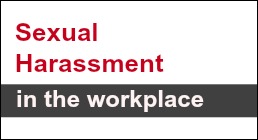
18/12/2017
Practical procedures employers can use to address sexual harassment at work.
Recently there have been a significant number of high profile cases of sexual harassment in the media, which serve as a reminder not only of the ongoing prevalence of this issue, but also of the importance of putting in place strategies to effectively prevent and address sexual harassment in the workplace. All employees are legally protected from sexual harassment in the workplace, and the Commission supports employers to manage workplace harassment.
Sexual harassment is unwanted conduct of a sexual nature which has the purpose or effect of violating a person’s dignity, or creating an intimidating, hostile, degrading, humiliating or offensive environment for them. Something can be considered sexual harassment even if the alleged harasser didn't intend it to be, and it doesn't have to be intentionally directed at a specific person. Sexual harassment can happen in a number of ways, for instance:
-
written or verbal comments of a sexual nature such as remarks about a colleague's appearance, questions about their sex life or offensive jokes
-
displaying pornographic or explicit images
-
sending or forwarding on emails that contains content of a sexual nature
-
unwanted physical contact and touching
-
sexual assault
Roisin Kelly, from the Equality Commission's Advisory Services Team, looks at the practical procedures that employers can use to address sexual harassment in the workplace.